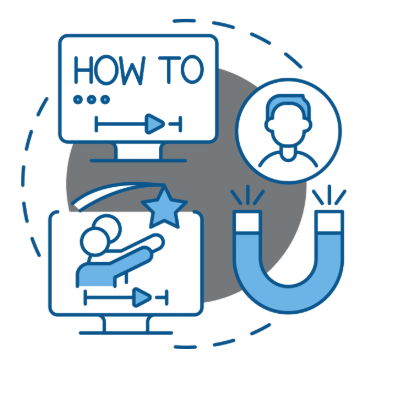If you run a business, you’re in sales.
That might sting a bit if you don’t like the idea of “selling,” but it’s the truth. You could be the best plumber, accountant, designer, or coach in the country — if you can’t sell, you don’t have a business.
But here’s the thing: sales doesn’t have to feel pushy. It doesn’t have to feel awkward. Done right, it’s simply about helping people solve problems and exchanging value.
In my coaching work, I see business owners shy away from sales because of the old stereotypes. They imagine the pushy car dealer or the telemarketer reading from a tired script. The result? They avoid it. And avoiding sales is the fastest way to stall a business.
The truth is, sales done properly feels nothing like that. Let’s break it down into 5 strategic pillars that are backed up with examples from real UK businesses that prove this works in practice.
Key Principle #1: Redefine What Sales Really Means
The first shift is in how you define sales.
Most people picture it as convincing or persuading someone to buy something they don’t want. That’s why so many owners dislike it.
In reality, sales is simply professionally helping people to buy. It’s about guiding someone towards the decision that best solves their problem.
Think about the last time you spoke to a professional who listened, asked the right questions, and then suggested a solution that just made sense. Did it feel like you were “sold to”? Or did it feel like you were helped? That’s what sales should be.
Key Principle #1 Case Study: Timpson
Timpson, the high-street services retailer, is known for shoe repairs, key cutting, and watch batteries. But what makes them special isn’t their services, it’s their culture.
Staff are trusted to make decisions and put the customer first. A Timpson employee won’t “push” you into an extra product, they’ll listen and solve your problem on the spot, whether it’s fixing a broken heel or cutting a spare key in minutes. That’s why Timpson has outlasted competitors and still thrives in a tough retail climate.
They’re not selling products. They’re solving problems.

Key Principle #2: Understand Money as an Exchange of Value
Change how you view money.
Money gets loaded with emotion. Some see it as status. Others fear asking for it. You even get some people who believe it’s “greedy” to charge too much. All of these beliefs make selling harder.
Strip it back and money is just a tool. It’s how society trades value. Nothing more, nothing less.
Here’s the shift: you’re not “taking money” from a customer. You’re exchanging value. They give you money in return for a solution that’s worth more to them than the cash they handed over.
When you stop linking money to self-worth and start seeing it as a fair exchange of value, sales becomes much simpler.
Key Principle #2 Case Study: BrewDog
When Aberdeen-based brewery BrewDog launched their “Equity for Punks” crowdfunding campaign in 2009, they flipped the funding model on its head. Instead of chasing loans, they invited customers to buy shares. Fans weren’t just paying for beer, they were exchanging money for identity, belonging, and a stake in the business. That emotional connection built loyalty and created a movement.
BrewDog went from a small craft brewery to one of the UK’s most recognised beer brands, all because they reframed how value was exchanged.

Key Principle #3: Focus on Problems, Not Products
Business is simple: solve problems for a profit.
Yet so many owners focus on talking about their product’s features. Customers don’t care about features. They care about what problem you can take off their plate.
Ask yourself: what keeps your customer awake at night? What pain are they feeling? When you can answer that, you stop selling products and start selling solutions.
The bigger the problem you solve, the more value you create — and the more people are willing to pay.
Key Principle #3 Case Study: Octopus Energy
Octopus Energy didn’t win millions of UK households by talking about kilowatts and tariffs. They looked at the real problems: rising bills and frustration with poor customer service in the energy sector. By making pricing transparent, investing in tech for simpler switching, and focusing on customer care, they solved the problems people actually cared about.
Today, Octopus is one of the UK’s fastest-growing energy companies; proof that when you solve real problems, growth follows naturally.

Key Principle #4: Master the Psychology of Sales
Here’s where it gets interesting: sales isn’t really about logic. It’s about emotion.
Research shows around 80% of buying decisions are driven by feelings, not facts. People might justify their choice afterwards with logic — but the decision itself is emotional.
That’s why your own beliefs matter so much. If deep down you believe sales is sleazy, that belief will show up in your tone, your body language, and your confidence. Customers feel it.
Reframe it. Sales isn’t sleazy. It’s solving problems. The formula is simple:
Beliefs × Action = Sales Success.
When you believe sales is about helping and you back that up with consistent action — asking great questions, listening deeply, and building trust — you unlock the real psychology of selling.
Key Principle #4 Case Study: Gymshark
Gymshark, started by Ben Francis in his mum’s garage, became a £1bn fitness brand by tapping into emotion. Gymshark wasn’t selling gym clothes; it was selling identity, pride, and community. Customers didn’t just buy leggings or hoodies , they bought confidence and belonging.
That emotional connection turned Gymshark into one of the UK’s fastest-growing businesses.

Key Principle #5: Follow a Proven Sales Process
Great salespeople aren’t born. They’re trained. And they all follow a process.
Think about how A&E works:
- Reception asks the first questions.
- Triage digs deeper.
- The doctor diagnoses.
- Finally, you get the prescription.
Each stage builds trust before offering a solution. At no point do you feel “sold to”, you feel guided.
That’s how your sales process should feel. Structured, professional, and customer-focused.
And yes, elite salespeople use scripts. Not robotic scripts, but frameworks they know work. Scripts ensure you don’t skip the important steps and give you confidence in the flow.
When you combine process with practice, sales stop being unpredictable. It becomes consistent.
Key Principle #5 Case Study: Innocent Drinks
Innocent started by selling smoothies at a London music festival. But they didn’t just try to flog bottles.
They asked customers to vote: “Should we quit our jobs to do this full time?” Two bins; one labelled “Yes” and one labelled “No”, collected empty bottles. That simple process created a conversation, not a pitch. People felt involved in the decision. The answer, of course, was “Yes” and Innocent went on to become one of the UK’s most loved drink brands.
Their entire sales and marketing approach has always been about guiding, not pushing.
 Final Thoughts
Final Thoughts
Sales doesn’t have to feel like selling. It’s not about chasing, pushing, or tricking anyone. It’s about solving problems, exchanging value, and helping people make decisions that genuinely improve their lives.
When you master these 5 principles; redefining sales, reframing money, focusing on problems, understanding psychology, and following a process, you’ll stop dreading sales.
Instead, you’ll see it for what it really is: a conversation that creates results for both sides.
Take Action
Ready to Put This Into Practice?
Reading about sales is one thing. Applying it in your own business is another. If you’re ready to sharpen your sales process, shift your mindset, and start closing more deals without feeling “salesy,” let’s talk.
Book a complimentary Clarity Call today. We’ll look at your current approach, spot the gaps, and map out the quickest way to turn conversations into customers.
Our Events
Join our monthly half-day business growth MasterCLASS or a more in-depth 90-Day Planning Workshop.
If you’re serious about growing your business, you need to be in the right room. Our monthly events, part of the Entrepreneurship Academy and 1-2-1 Business Coaching Programmes, give you that space.
They’re practical, punchy, and focused on helping you take real action. Whether it’s your team, your time, or your profit holding you back, we’ll show you how to fix it, and you’ll leave with a detailed action plan that you can implement to see immediate results!
Come see what high-performance business coaching looks like when it actually works.






